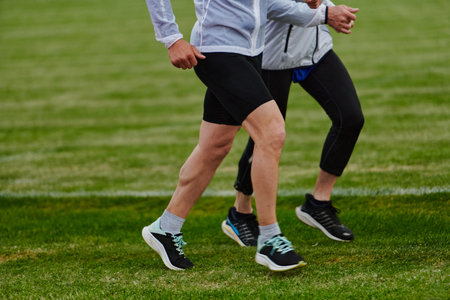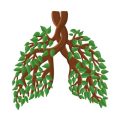Understanding Cultural Diversity in American Communities
The United States is known for its incredible diversity, with people from many different cultural, ethnic, and socio-economic backgrounds living side by side. This diversity shapes how individuals view health, illness, and the healthcare system, including orthopedic rehabilitation. To provide effective care, it’s important for healthcare professionals to understand these differences and adapt their approach accordingly.
Cultural and Ethnic Diversity
American communities are made up of people from a wide range of cultural and ethnic backgrounds, including African American, Hispanic/Latino, Asian American, Native American, White/Caucasian, and many others. Each group may have unique traditions, beliefs about health and healing, and preferences for communication with medical providers.
| Community | Health Beliefs | Communication Style | Rehabilitation Expectations |
|---|---|---|---|
| Hispanic/Latino | Family involvement is key; may use traditional remedies | Warm, personal communication valued; may prefer Spanish | Expect family support during rehab; may expect quick results |
| African American | Mistrust of medical system can be present due to history; spirituality important | Directness varies; value respect and shared decision-making | Desire clear information; may prefer providers who understand cultural context |
| Asian American | Harmony and balance central to health; stigma around disability or injury in some groups | Indirect communication common; deference to authority figures | May under-report pain; expectations influenced by family opinions |
| Native American | Holistic view of health; importance of community and tradition | Storytelling and listening preferred; respect for elders emphasized | May combine traditional healing with Western rehab methods |
| White/Caucasian (non-Hispanic) | Diverse perspectives based on country of origin, religion, region | Varies from direct to indirect; typically comfortable with mainstream healthcare norms | Tend to expect structured rehab plans and measurable progress |
Socio-Economic Differences in Rehabilitation Access and Beliefs
Socio-economic status also affects access to orthopedic rehabilitation. Those with lower income or limited insurance coverage may face barriers such as transportation issues or difficulty paying for therapy sessions. Additionally, education level can shape how patients understand their diagnosis and treatment plan.
| Socio-Economic Factor | Impact on Rehabilitation Experience |
|---|---|
| Income Level | Ability to afford therapy sessions or equipment may be limited; may prioritize work over rehab appointments. |
| Education Level | Understanding of medical instructions may vary; more education often leads to better engagement in rehab. |
| Access to Transportation | Lack of reliable transportation can result in missed appointments or delayed recovery. |
| Insurance Coverage | No or low coverage may limit treatment options or frequency of sessions. |
The Importance of Cultural Awareness in Communication Styles
Cultural background influences how patients communicate pain, ask questions, or share concerns. For example:
- Some patients may avoid direct eye contact out of respect for authority.
- Certain cultures value family decision-making over individual choices regarding treatment plans.
- Pain expression can differ—some cultures encourage stoicism while others promote open discussion of discomfort.
Culturally Sensitive Rehabilitation: Key Considerations for Providers
Culturally competent care in orthopedic rehabilitation means recognizing these differences and adjusting communication styles, educational materials, and care plans. It involves listening actively to each patient’s concerns, respecting their preferences, and working together with families when appropriate.
Main Takeaways for Orthopedic Rehabilitation Professionals:
- Learn about the cultural backgrounds common in your local community.
- Ask patients about their preferences for language, family involvement, and traditional practices.
- Avoid assumptions—each individual is unique even within a broader cultural group.
- Create an open environment where patients feel comfortable sharing their needs and concerns.
This approach helps build trust between providers and patients from diverse backgrounds, leading to better outcomes throughout the rehabilitation process.
2. Culturally Responsive Communication in Orthopedic Care
Why Culturally Responsive Communication Matters
In the United States, orthopedic rehabilitation professionals often work with patients from many different backgrounds. Effective communication is more than just speaking the same language—it means understanding each patient’s unique culture, beliefs, and preferences. This helps build trust and improves outcomes during rehab.
Strategies for Building Rapport
- Show Respect: Greet patients using their preferred names and titles. Some cultures value formal greetings or family involvement in care.
- Be Curious, Not Judgmental: Ask open-ended questions about a patient’s health beliefs or traditional practices. For example, “Are there any home remedies you like to use?”
- Find Common Ground: Share small talk about safe topics like sports, weather, or local events to connect on a personal level.
Examples of Building Rapport
| Culture/Community | Rapport-Building Tips |
|---|---|
| Hispanic/Latino | Acknowledge the importance of family in decision-making; learn basic Spanish greetings. |
| African American | Show genuine interest in patient stories; respect spiritual beliefs if shared. |
| Asian American | Address elders first if present; avoid direct confrontation—use gentle encouragement. |
| Native American | Allow time for silence; ask about tribal affiliations and healing traditions. |
Practicing Active Listening
- Give Full Attention: Put away devices and make eye contact (unless culturally inappropriate).
- Reflect and Clarify: Repeat key points back to the patient: “So you’re saying the pain gets worse at night?”
- Avoid Interrupting: Let patients finish explaining before responding or offering advice.
- Watch Non-Verbal Cues: Be mindful of body language—some cultures may not express pain openly.
Using Culturally Appropriate Language
- Avoid Medical Jargon: Use simple words when explaining procedures or exercises: say “joint” instead of “articulation.”
- Use Interpreters When Needed: Always ask if an interpreter is needed for non-English speakers. Don’t rely on children to translate sensitive information.
- Sensitize Language to Culture: Adapt explanations and examples to fit the patient’s background. For instance, explain physical therapy exercises using familiar activities from their community or daily life.
- Acknowledge Health Beliefs: If a patient believes in traditional medicine, acknowledge it respectfully and discuss how rehab can complement their beliefs.
Culturally Sensitive Phrases You Can Use
| Phrases to Try | Phrases to Avoid |
|---|---|
| “How would you like me to address you?” “Are there any traditions important for your care?” “Is there anything I should know about your diet or health practices?” |
“You have to do it this way.” “That doesnt make sense.” “Why do you believe that?” (in a judgmental tone) |
Culturally responsive communication means meeting patients where they are. By building rapport, practicing active listening, and using language that respects cultural differences, orthopedic rehab professionals can create a welcoming environment that supports healing for everyone.
![]()
3. Identifying and Addressing Health Disparities
Understanding Common Disparities in Orthopedic Rehabilitation
In the United States, people from different backgrounds often face unequal access to orthopedic rehabilitation services. These disparities can be seen in urban, suburban, and rural communities, and they affect groups based on race, ethnicity, language, income, insurance status, and more. Understanding these gaps is the first step toward creating fair and effective care for everyone.
Common Barriers to Access
| Community Group | Common Barriers | Example |
|---|---|---|
| Black and Hispanic Americans | Lack of insurance, mistrust in healthcare system, language barriers | Difficulty finding rehab clinics with bilingual staff or culturally aware providers |
| Rural Communities | Long travel distances, fewer rehab centers, transportation issues | A patient may need to drive hours for a single therapy session |
| Low-Income Families | Limited insurance coverage, high out-of-pocket costs, work schedule conflicts | A parent may skip rehab appointments due to missing work or lack of childcare |
| Elderly Populations | Poor mobility, digital divide (difficulty using telehealth), fixed incomes | Seniors may not access virtual rehab sessions due to tech challenges or cost concerns |
Advocating for Equitable Orthopedic Care
To close these gaps, healthcare professionals and community members must work together. Here are some practical ways to advocate for more equitable orthopedic rehabilitation:
- Increase Cultural Competency Training: Encourage therapists and staff to learn about cultural differences in health beliefs, communication styles, and family involvement.
- Expand Language Services: Offer interpretation services and provide educational materials in multiple languages commonly spoken in the area.
- Partner With Community Organizations: Work with local churches, schools, senior centers, or immigrant advocacy groups to build trust and share information about available rehab programs.
- Create Flexible Scheduling: Offer evening or weekend appointments to help patients who have demanding jobs or family responsibilities.
- Use Telehealth Wisely: Provide technology support for patients new to virtual visits and make sure telehealth platforms are accessible for people with disabilities or limited English skills.
- Advocate for Policy Change: Support state and federal efforts that expand Medicaid or other insurance coverage for physical therapy and related services.
- Collect Data and Listen: Regularly ask patients about their experiences and barriers, then use this feedback to improve services.
The Role of Rehabilitation Professionals in Equity Advocacy
Cultural competence goes beyond awareness—it’s about action. Physical therapists and other rehab professionals can serve as advocates by identifying patients at risk for poor access, connecting them with community resources, and standing up for policy changes that benefit all Americans. By recognizing health disparities and taking steps to address them, we move closer to providing high-quality orthopedic rehabilitation for everyone—no matter where they live or what background they come from.
4. Tailoring Rehabilitation Approaches for Diverse Populations
Understanding the Importance of Cultural Adaptation
Orthopedic rehabilitation is not a one-size-fits-all process. In the United States, people come from many different backgrounds, each with their own cultural beliefs and health practices. To provide the best care, rehabilitation plans need to respect and adapt to these differences. Cultural competence means understanding a patient’s values, traditions, and expectations so that care can be personalized.
Adapting Rehabilitation Plans
When creating a rehab plan, it’s important to ask about any cultural or traditional practices that might affect treatment. For example, some patients may prefer certain types of physical activities over others due to religious or cultural beliefs. Some might use traditional remedies alongside Western medicine. Being open to discussing these preferences helps build trust and ensures better outcomes.
Examples of Cultural Considerations in Rehab
| Cultural Factor | Rehabilitation Adaptation |
|---|---|
| Language Barriers | Use interpreters or translated materials for exercises and instructions. |
| Religious Practices | Schedule sessions around prayer times or fasting periods. |
| Dietary Restrictions | Recommend nutrition plans that align with cultural diets during recovery. |
| Traditional Healing Methods | Respect and integrate safe home remedies when possible, after discussion. |
| Family Involvement | Invite family members to participate in therapy education and support sessions. |
The Role of Family in American Communities
Family plays a big role in many American households, especially among immigrant families. Involving family members in the rehabilitation process can help patients stay motivated and follow through with exercises at home. Therapists should encourage family participation by providing clear instructions and answering questions so everyone understands the rehab goals.
Tips for Engaging Families in Rehabilitation
- Hold group education sessions where family members can learn about the patient’s condition and rehab plan.
- Create simple handouts or videos in multiple languages for home use.
- Encourage families to keep track of progress together, using easy-to-understand charts or checklists.
- Acknowledge the emotional impact of injury on both the patient and their loved ones, offering support as needed.
Patient Education: Making Information Accessible
Culturally competent rehab also means making sure educational materials are understandable. Use plain language, avoid medical jargon, and consider visual aids or demonstrations. For communities with lower health literacy or limited English proficiency, offer resources in their preferred language and format—this could include videos, illustrated guides, or community workshops.
5. Building Cultural Competence in Rehabilitation Teams
Why Cultural Competence Matters in Orthopedic Rehab
Orthopedic rehabilitation professionals work with people from many different backgrounds across the United States. Being culturally competent means understanding and respecting the values, beliefs, and needs of each patient. This helps build trust, improves communication, and leads to better health outcomes.
Practical Tips for Developing Cultural Competence
1. Ongoing Training
- Attend Workshops: Participate in seminars or online courses focused on cultural awareness and sensitivity in healthcare.
- Learn About Local Communities: Stay informed about the cultures, languages, and traditions common in your clinic’s area.
- Use Case Studies: Review real-life scenarios involving patients from diverse backgrounds to learn how to respond effectively.
2. Self-Reflection
- Check Your Biases: Regularly reflect on your own beliefs and how they may affect patient care.
- Seek Feedback: Ask colleagues or mentors for honest feedback about your interactions with patients from different backgrounds.
- Personal Journaling: Keep a journal to track your experiences and growth in cultural competence.
3. Community Engagement
- Build Partnerships: Connect with local community leaders and organizations to understand their health needs and concerns.
- Participate in Events: Attend cultural festivals or community gatherings to immerse yourself in local traditions and practices.
- Create Outreach Programs: Develop programs that provide education or services tailored to specific cultural groups in your area.
Cultural Competence Strategies at a Glance
| Strategy | Description | Example |
|---|---|---|
| Cultural Training | Formal learning about cultural differences | Attending a webinar on Hispanic health beliefs |
| Self-Reflection | Examining personal attitudes and biases | Journaling after patient encounters |
| Community Engagement | Building relationships with diverse groups | Partnering with Native American clinics for outreach events |
| Bilingual Resources | Offering information in multiple languages | Providing rehab instructions in Spanish and English |
| Diverse Team Hiring | Recruiting staff from varied backgrounds | Hiring multilingual therapists to serve a wider population |
The Ongoing Journey of Cultural Competence
Cultural competence is not a one-time achievement—it’s an ongoing process. By embracing training, self-reflection, and engaging with local communities, orthopedic rehabilitation teams can better meet the unique needs of America’s diverse populations, making rehab care more inclusive and effective for everyone.


